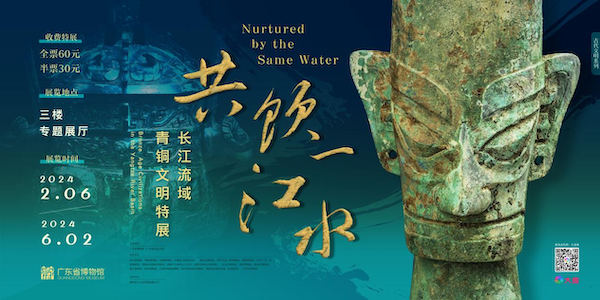NASA plunged a refrigerator-sized spacecraft into a stadium-sized asteroid in 2022,关键字2 with hopes of simply nudgingit.
It was an unprecedented, successful test — proving humanity could alter the path of a menacing asteroid, should one ever be headed our way. Now, the space agency revealed that the DART mission didn't simply vastly exceed expectations for moving the asteroid Dimorphos, but the impact changed the rubbly space rock's shape.
The impact cut Dimorphos' loop around its parent asteroid (they journey around the sun as a pair, or binary system) by a whopping 33 minutes and 15 seconds — when the original goal was to change it by at least 73 seconds. "And the entire shape of the asteroid has changed, from a relatively symmetrical object to a 'triaxial ellipsoid' – something more like an oblong watermelon," Shantanu Naidu, an engineer at NASA’s Jet Propulsion Laboratory, said in a statement.
SEE ALSO: NASA scientist viewed first Voyager images. What he saw gave him chills.Naidu led the new research from the DART mission, short for Double Asteroid Redirection Test, which was recently published in The Planetary Science Journal.
To grasp Dimorphos' new shape, scientists used telescopes on Earth to observe how light reflected off the two asteroids, as well as watching when the asteroids would cast a shadow on each other. The graphic below shows the change in the 525-foot-wide (160-meter) space rock, which is no longer largely symmetrical.
Mashable Light Speed Want more out-of-this world tech, space and science stories? Sign up for Mashable's weekly Light Speed newsletter. By clicking Sign Me Up, you confirm you are 16+ and agree to our Terms of Use and Privacy Policy. Thanks for signing up!  The modeled shape of the asteroid Dimorphos, before and after impact. Credit: NASA / JPL-Caltech
The modeled shape of the asteroid Dimorphos, before and after impact. Credit: NASA / JPL-Caltech  The asteroid Dimorphos just two seconds before impact from the DART spacecraft. Credit: NASA / Johns Hopkins APL
The asteroid Dimorphos just two seconds before impact from the DART spacecraft. Credit: NASA / Johns Hopkins APL
Featured Video For You
How Did We Get Here: Into the UnknownAstronomers, and the public, will soon have much closer views of post-impact Dimorphos. The European Space Agency's Hera mission will rendezvous with and survey the asteroid pair in 2026. "Now that NASA’s DART mission has impacted the moonlet, Hera will turn the grand-scale experiment into a well-understood and repeatable planetary defense technique," the agency explained.
It's important, if not critical, for humanity to find potentially threatening asteroids and have the technological ability to deflect them. But, fortunately, sizeable impacts are rare:
- Every single day about 100 tons of dust and sand-sized particles fall through Earth's atmosphere and promptly burn up.
Related Stories- If a scary asteroid will actually strike Earth, here's how you'll know
- NASA spacecraft keeps on going faster and faster and faster
- When the solar eclipse hits, you'll see these radiant planets
- NASA’s most unusual astronaut has died
- What will happen when the next supervolcano erupts, according to NASA
- Every year, on average, an "automobile-sized asteroid" plummets through our sky and explodes, explains NASA.
- Impacts by objects around 460 feet in diameter (big enough to cause significant regional destruction) occur every 10,000 to 20,000 years.
- A "dinosaur-killing" impact from a rock perhaps a half-mile across or larger happens on 100-million-year timescales. There's no known threat from these colossal asteroids for the next century, and the likelihood of an impact in the next thousand years is exceedingly low.
顶: 4踩: 217
When NASA crashed into an asteroid, it did way more than 'nudge' it
人参与 | 时间:2025-06-14 23:27:42
相关文章
- Best vacuum deal: Save 25% on the Shark Clean & Empty at Amazon
- 微软或将全面退出主机市场?机器可能全靠第三方厂商
- Gần 300 thiếu nhi Hà Nội có nguy cơ bỏ học được vận động trở lại trường
- A Deep Dive on Ashika Island, the New Resurgence Map in Season 02 of Call of Duty®: Warzone™ 2.0
- 暗喻幻想全部阿基态怎么解锁 暗喻幻想所有阿基态解锁条件一览
- 动物油比植物油更容易让人发胖……是真是假?|谣言终结站
- 守护平安幸福年 桃浦镇开展节前安全检查和走访慰问
- “美式轻骑法”的四种方式:骑马时,是“坐”还是“不坐”?
- 周笔畅2025《天呐!我怎么会变成这样》多维时空燃爆星城 6.7长沙首演售罄
- 《为爱奋斗》(小苏演唱)的文本歌词及LRC歌词




评论专区